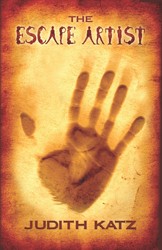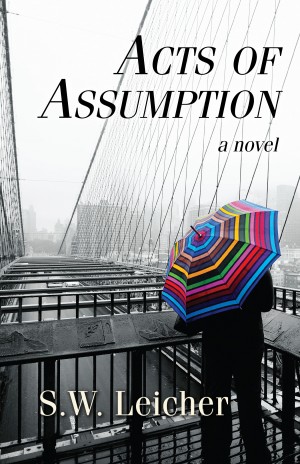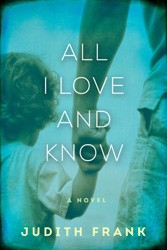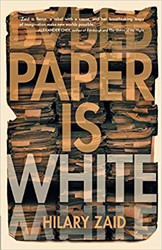Love it was. Impossible, certainly! Israeli novelist Judith Katzir has written a stirring tale about a relationship — secret, lovely, intense, and sensuous — between a fourteen-year- old student and her twenty-seven-year-old language arts teacher. Rivi and Michaela, love starved and needy, attracted to each other with a magnetic force, share something that shepherds one through adolescence and lasts a lifetime for both. Their love is destined to exposure, but not to oblivion. The story is saved through the wonderful, intimate entries in Rivi’s diary.
Dearest Anne, the confidante of the diary is, of course, Anne Frank. Like millions of other readers, Rivi identified with and honored the yearnings and isolation of the young Anne. “The attic Michaela and I made for ourselves is my real life, and all the rest is like some movie…”
Although the translation is a bit dense, this coming of age story has real staying power. Afterward, notes.
Interview
Best-selling Israeli author Judith Katzir has published two collections of stories and novellas,three children’s books, and two novels, Matisse Has the Sun in His Belly (1995; Eng.translation, 2006) and Dearest Anne (2003; Eng. translation, 2008), which is receiving agood deal of critical attention in the U.S. Katzir studied literature and film at Tel Aviv University,where she now teaches creative writing. Special thanks to the Israeli Consulate of NY and the Institutefor the Translation of Hebrew Literature for making the translation of this piece possible.Judith Katzir: The English title, Dearest Anne, was suggested as an option for the foreign-language translations. That’s what it’s called in French, whereas in German and Dutch the title Discovering Love was chosen. The Hebrew title, Here I Begin, is a quote from Anne Frank’s diary. With these words she opens her first letter to her imaginary friend Kitty. It has multiple meanings — the beginning of writing, of adolescence, of starting out in life.
MT: How does this book compare to other novels of yours in terms of theme, narrator’s voice, and format (letters)?
JK: Dearest Anne is my second novel. Apart from it I’ve written novellas, short stories, children’s books, and a play. My first novel, Matisse Has the Sun in His Belly, was published eight years before Dearest Anne. Rivi Shenhar is its protagonist too. It, too, is a bildungsroman, a coming-of-age novel, describing Rivi’s twenties. In it the teacher, the instructor, the beloved, is a married man many years older than Rivi. Like Michaela Berg, the literature teacher in Dearest Anne, the man in Matisse is erudite and cultured and enriches Rivi while encouraging her to write. An additional stratum in Rivi’s growing up described in the earlier book is her coping with her mother’s illness and death. Matisse corresponds with works from mainstream literature and culture that were written mainly by men. In Dearest Anne the teacher, the instructor, the beloved, is a woman, Michaela Berg, and the novel corresponds with the private, underground “canon” I collected during my own adolescence. In our literature lessons at school we studied works that were, in the main, written by men. As a girl who wrote, I needed to paint myself a portrait of the woman writer, and I did it through the works of women writers and poets like Sylvia Plath, Virginia Woolf, Erica Jong, Margaret Duras, and Israeli writers like Leah Goldberg, Zelda, Dahlia Ravikovitch and others. So for me the two novels are two pillars of the same house. One represents the “father tongue” and the other the “mother tongue.”
MT: At one point in the novel, the protagonist is exploring her sexuality and admits being comforted by Anne Frank’s bisexual interests. What else bridges the two characters to one another?
JK: The connection between Rivi and Anne Frank is complex — for Rivi, as it was for me and my generation, Anne Frank’s diary was the first, softened, aperture to the Holocaust. We knew numerous Holocaust survivors but they didn’t talk. Up until the early 1980’s the subject was kept quiet. There were Holocaust Remembrance Day ceremonies at school, and as opposed to the formal ceremonies Anne Frank’s diary provided the reader with a personal, first person experience. Anne, like Rivi, is a girl writer who aspires to become an author. Rivi identifies with Anne’s need to document everything in her diary, with her sensitivity, vitality, and curiosity, including erotic curiosity about girls and boys alike. Rivi, like Anne, has a complex and ambivalent relationship with a harsh, judgmental mother. Both Rivi and Anne have turbulent souls. In the novel Anne’s hiding place and ‘the hiding place within the hiding place, which is the personal diary, becomes a metaphor for Rivi and Michaela’s forbidden love, and for Rivi’s secret diary, which has its own hiding place. Rivi buries it in the ground and ‘resurrects’ it and reads it twenty years later, when she is already an adult.
MT: The protagonist is an aspiring writer. When you were young, were you like Rivi and if so, which writers did you most admire?
JK: In a previous response I wrote about the women writers from whom I’ve drawn inspiration. But from a stylistic standpoint the main influence on me is that of the Israeli writer Ya’akov Shabtai who died in the early 1980’s. He wrote long stream of consciousness sentences, starting in the present, sliding into the past, and back to the present — in the same sentence without periods, sometimes over several pages. In my early twenties I discovered Shabtai’s two novels, Past Continuous and Past Perfect. I felt as if someone had taken my hand and pressed a key into it. I told myself that if one day I wrote a story (up to that point I’d written mainly poetry) that’s how I’d write it, because it was the rhythm of my consciousness too. That was how my first stories and parts of the novels were written. Afterwards I also wrote in different ways, in short staccato sentences, because not all consciousnesses are the same…
MT: How personal is this novel? Is that question asked a lot?
JK: The question of the novel’s autobiographical elements has been asked directly or indirectly on numerous occasions. The curiosity is understandable, but I always reply that I am not in the habit of conducting organized tours around my laboratory, where I concoct the stories from atoms of memory, imagination, other people’s stories, inspiration from other books, and so forth. The biographical connection between writer and work is irrelevant. Far more relevant is the connection between the work and the reader. Does he or she manage to identify with it? Find him- or herself between the lines? One of my aims as a writer is to reconnoiter the soul’s ‘hinterlands,’ the distant, extreme places trodden by human beings in their subconscious or a dream, and only infrequently — in real life.





